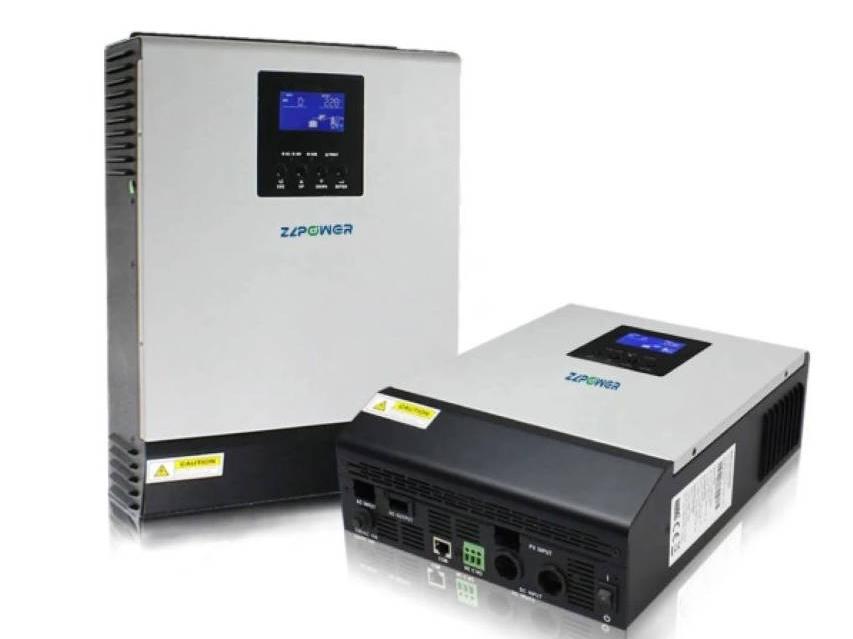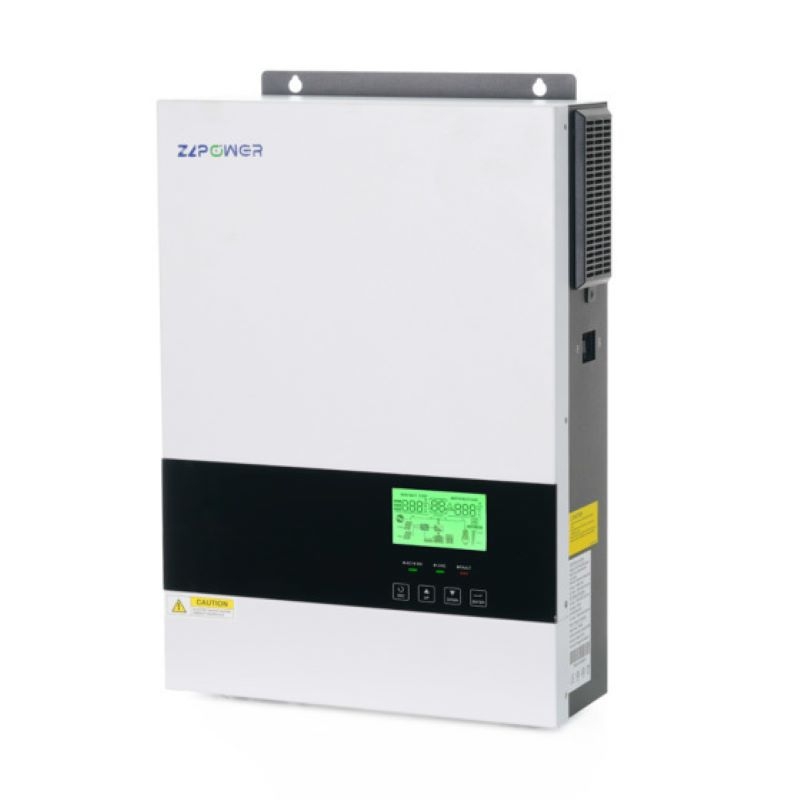

Solar inverters are super important for solar power systems. They turn the direct current (DC) from your solar panels into alternating current (AC) that powers your home or business. But lots of folks run into a problem where their inverter keeps tripping. This messes with your power supply. It can also make your solar setup less efficient. Figuring out why this happens is key to fixing it and keeping things running smoothly.
One big reason your inverter cuts out is electrical overload. If you’ve got too many devices plugged in, it can overwhelm the inverter’s capacity. That triggers a safety feature to protect it from damage. Solar inverters for home use from brands like ZLPOWER come with smart protection systems. These handle things like overcurrent, short circuits, and overloads really well. Take ZLPOWER’s GS1-12KW low frequency off grid solar inverter, for example. It’s got built-in protections like input surge protection and output overload short circuit protection. This off-grid solar inverter with battery backup keep your system steady no matter what’s plugged in.
But if your inverter keeps cutting out because of overload, it might be too small for your needs. Or maybe you’ve added more appliances than it can handle. Check your energy use carefully. Pick an inverter with enough power, like ZLPOWER’s PVG 5.5KW Off Grid Hybrid Solar Inverter. It’s built to manage bigger loads without a hitch.

Another common issue is grid voltage ups and downs. When the voltage swings too much, it can mess with how your inverter works. This is especially true if the voltage goes outside the normal range. Top-notch inverters, like ZLPOWER’s, have features to deal with these swings. Their PVG series handles a wide input voltage range (90-280VAC for home appliances). That means it stays steady even when the grid isn’t.
Still, if the voltage keeps jumping around, you might need extra help. A voltage stabilizer or automatic voltage regulator (AVR) can keep things steady. These reduce stress on your inverter. They also stop it from cutting out unnecessarily.
Bad wiring or loose connections in your solar system can also make your inverter cut out. Faulty or poorly installed cables can cause power to flow unevenly or even short circuit. That trips the inverter’s safety features. Good installation and regular checkups are a must to avoid this.
ZLPOWER focuses on clever design and quality parts to make their products reliable. Their modular UPS systems, for instance, use advanced digital tech to keep an eye on connections. This helps catch problems early.
Make it a habit to check your wiring for wear or damage. Fix any issues fast with help from a pro. Using certified electricians for setup can cut down on risks from bad connections.
Your solar panels directly affect how your inverter works. Things like shade, dirt, or worn-out panels can lower the energy they produce. This leads to inconsistencies that might cause your inverter to cut out. Using mismatched panels or setting them up wrong can also create imbalances. That puts extra strain on the inverter.
ZLPOWER’s hybrid solar inverters use MPPT (Maximum Power Point Tracking) tech. This 3-phase solar inverter 10kW with MPPT controller squeezes the most energy out of your panels, even in tricky conditions like partial shade.
To keep panel issues from messing with your inverter, clean and maintain them regularly. Modern inverters often have monitoring tools. These give you real-time info on how your panels are doing. They help you spot and fix problems before they get worse.
By tackling these issues—overloads, voltage swings, bad wiring, and panel troubles—you can cut down on inverter cutouts. Your solar system will run much better, too.
Overheating is a big reason inverters cut out. This happens when they’re in hot places or don’t have enough airflow. Too much heat over time can make them less efficient. It might even damage the parts inside. ZLPOWER builds their products with smart designs. They include cooling systems like turbofans to keep heat in check and save energy. For example, their GP33 series Low Frequency Online UPS has a modular setup with advanced turbofan tech. This keeps temperatures under control, even with heavy use.
To avoid overheating, put your inverter in a shady or airy spot. Keep up with maintenance. Clean dust from vents and make sure air can flow freely. Picking an inverter with thermal protection features helps, too. ZLPOWER’s PVG 5.5KW Off Grid Hybrid Solar Inverter has advanced safeguards to stay stable in all sorts of conditions.
Ground faults happen when electrical current takes a wrong path through the grounding system. This can trip your inverter’s safety features. They’re often caused by damaged insulation, loose connections, or moisture sneaking in.
ZLPOWER’s inverters are built with tough protection systems. These spot and fix ground faults fast. Their hybrid inverters use smart digital monitoring to check for issues constantly. Regularly inspect your solar setup for wear or damage that could cause ground faults. Use waterproof enclosures and good-quality cables to lower the risk.
If ground faults keep happening, call in a certified electrician. They can dig into the problem and make sure everything meets safety standards.

Wrong settings or setup errors can make your inverter cut out a lot. Modern inverters let you tweak things like voltage limits, frequency ranges, and battery charging priorities. If these are set wrong, the inverter might act up and become unstable.
ZLPOWER’s PVM Plus 3.5KVA 5.5KVA Off Grid Inverter has a user-friendly LCD display. You can adjust settings like input voltage ranges or AC/solar charger priorities to fit your needs.
To dodge setup problems, stick to the manufacturer’s instructions when installing. Keep the firmware updated. Use the maker’s monitoring tools to boost performance. ZLPOWER’s hybrid inverters, for example, support RS232 for mobile monitoring and USB for managing data.
As your solar system gets older, parts like capacitors, diodes, or switches can wear out. Faulty parts can mess up normal operation and make the inverter cut out often. Old batteries are another issue. If their capacity drops, they might not supply steady power to the inverter.
ZLPOWER’s energy storage solutions are made to last. Their lithium batteries can handle up to 3,500 cycles—way more than regular lead-acid batteries. Choosing quality parts from trusted brands means less maintenance and a longer lifespan.
Check your system regularly to catch aging or broken parts early. Swap out worn components quickly to avoid cutouts. This also keeps your system running efficiently. Partnering with pros who know solar systems can help with routine maintenance.
By dealing with these issues—overheating, ground faults, setup errors, and old parts—you can make your inverter much more reliable. Your solar system will produce more energy, too.
A: Voltage ups and downs from the grid can mess with your inverter’s operation, especially if they go outside the normal range. If this keeps happening, a voltage stabilizer or automatic voltage regulator (AVR) can help keep things steady.
A: Yes! Faulty or loose wiring can cause uneven power flow or short circuits, triggering your inverter’s safety features. Regular checks for wear or damage and using certified electricians for installation can prevent this.
A: Shade, dirt, or worn-out panels can lower energy output, creating inconsistencies that stress your inverter. Mismatched panels or wrong setups can also cause issues.